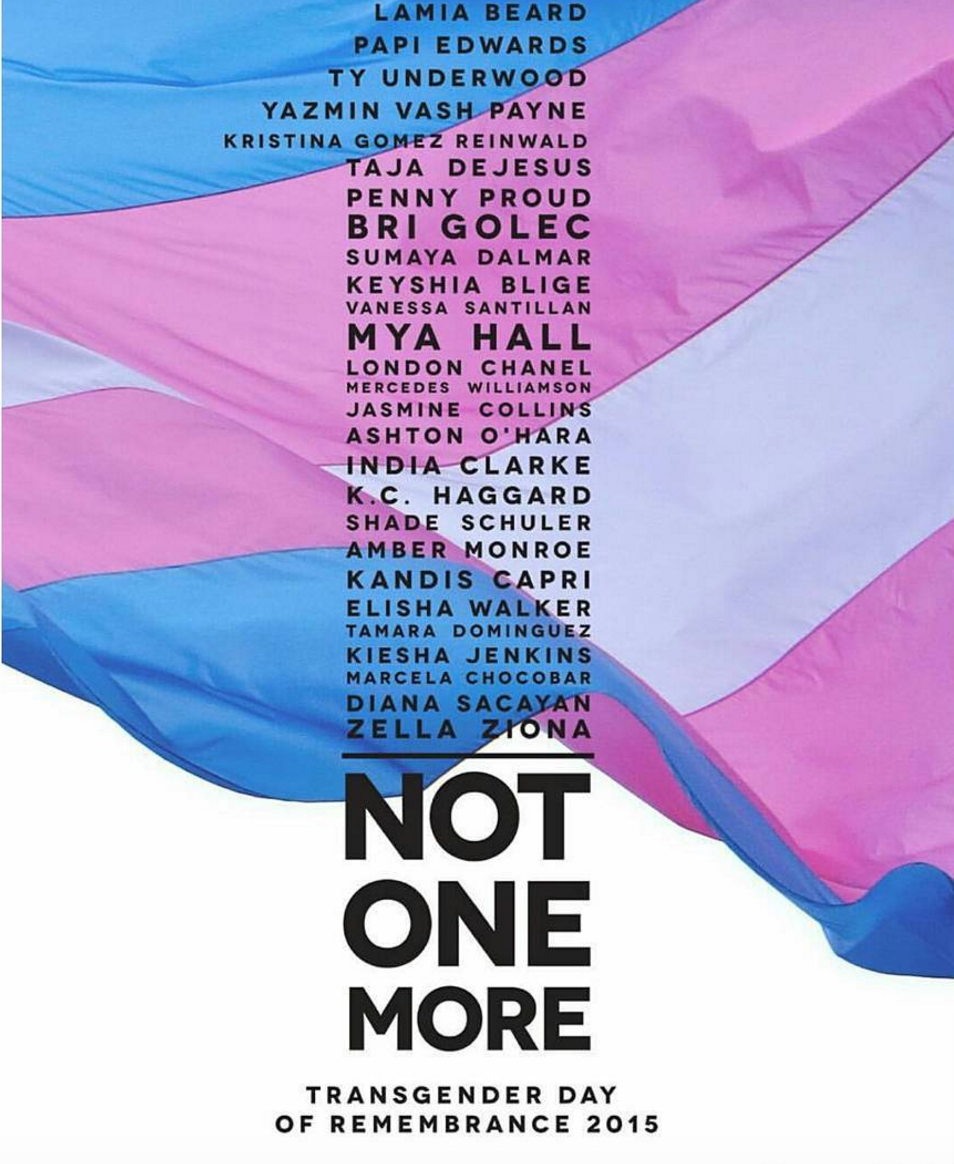Why Transgender Day of Remembrance Is Trending Today
By:
On November 20 of every year, the transgender community honors the memory of those who have been lost to anti-transgender violence. It's called Transgender Day of Remembrance (TDOR).
 Jesse Finley Reed - instagram.com
Jesse Finley Reed - instagram.com
RELATED: Here's Why Transgender "Bathroom Panic" Is Ridiculous
Gwendolyn Ann Smith explained that the day was founded as a response to the murder of Rita Hester, a trans woman from Massachusetts.
"It all started one night, when I spoke with a few other transgender people about the murder of Rita Hester in November 1998. I talked about how similar the death was to that of Chanelle Pickett just three years before. Both were transgender women of color who lived in Massachusetts, were last seen alive at a neighborhood club and died in mid-November.
No one I spoke with then knew who Chanelle Pickett was, even though the trial of her murderer, William Palmer, had ended only months before Hester's death. It seemed clear to me then that we were forgetting our past, and were—to paraphrase George Santayana—doomed to repeat it."
What began as a single vigil in the Castro district of San Francisco in 1999 has grown to an international day of mourning and action. People around the globe memorialize the dead and bring awareness to the need to stop the ongoing violence targeting trans and gender non-conforming people by attending rallies, marches and community events that seek one goal: an end to anti-transgender attacks.
6 TDOR facts you should know
Although the first vigil was held 16 years ago, the need has never been greater—and the violence hasn't stopped. Here are six facts to know about the violence faced by the trans and gender non-conforming community in 2015.
1. Violence against trans and gender non-conforming people continues to climb.
More trans women have been murdered in America this year in anti-trans attacks than in any year on record. And we still have one month to go. “Twenty-two transgender women and gender non-conforming people have been killed this year alone,” notes National LGBTQ Task Force’s Victoria Rodriguez-Roldan in a statement on this year's event. The number is staggering, considering that trans people represent far less than 1 percent of the population.
2. Almost 1-in-4 transgender people report experiencing violence or abuse from a family member.
Many transgender and gender non-conforming individuals are attacked by strangers, but the violence also commonly occurs closer to home—like 33-year-old Yazmin Vash Payne who was stabbed to death by her boyfriend in Van Nuys, California earlier this year before her apartment was set on fire. According to a 2011 study, 19 percent of respondents said they had suffered from domestic abuse related to their gender non-conformity.
3. Anti-trans violence predominantly impacts trans women of color.
An estimated 90 percent of the trans homicides reported in 2015 were people of color. A vast majority were also transgender women (male-to-female). Human Rights Campaign shows that of all reported anti-transgender deaths from 2013 to 2015, 87 percent of those murdered in the last two years were trans or gender non-conforming people of color.
4. Transgender people also have more difficulty with unemployment and lower incomes than their cisgender counterparts.
Trans people experience unemployment at twice the rate of the general population, according to the National Center for Transgender Equality and the LGBTQ Task Force. The community also is more likely to earn less than $10,000 per year, with twice the national average falling below the $10,000 mark because of their perceived gender non-conformity.
5. Only 18 states and the District of Columbia have clear laws that protect transgender people.
Despite the high rates of violence, job discrimination and other challenges, 32 states still allow transgender workers to be fired or denied employment simply because of their identity. Only California, Colorado, Delaware, the District of Columbia, Hawaii, Illinois, Iowa, Maine, Maryland, Massachusetts, Minnesota, Nevada, New Jersey, New Mexico, Oregon, Rhode Island, Vermont and Washington provide needed employment protection to their trans residents.
6. Transgender people are way more likely to attempt suicide than cisgender people.
Although TDOR typically memorializes those who died at the hands of another, transgender individuals are sadly far more likely than the general public to die by their own hands, too. One survey suggests that 41 percent of trans or gender non-conforming people have attempted suicide at some time in their lives. That's nearly nine time the national average.
Many are also taking to social media to express their powerful hopes for Trans Day of Remembrance, using #TDOR and #TransMonth:
Celebrities are speaking out, too
"I Am Cait" co-stars Caitlyn Jenner and Chandi Moore even released a PSA for the occasion:
The White House also issued a statement, commemorating the day:
